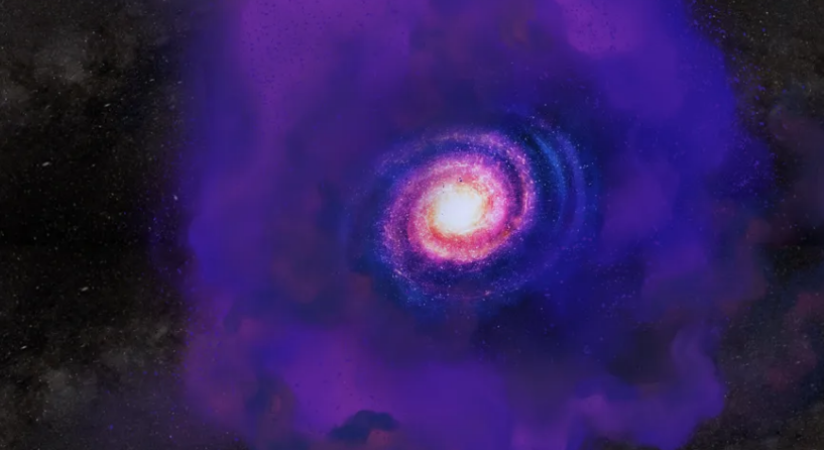For some time, scientists have wondered if galaxies could exist without dark matter halos. New research reverses this, exploring whether some dark matter halos might exist without galaxies—like hollow cosmic Easter eggs drifting through space.
Galaxies and dark matter are closely linked because galaxies form when gas and dust fall into gravitational wells created by dark matter clumps. As mass accumulates, stars form, growing a galaxy that sits within a dark matter halo.
Ethan Nadler, a computational astrophysicist at UC San Diego, investigates whether “dark” dark matter halos—halos without stars or galaxies—exist. He calculated a new, lower mass threshold below which halos fail to form stars.
Previously, the star formation limit was thought to be between 100 million and 1 billion solar masses, implying starless halos were rare. Nadler’s work shows stars could form in halos as small as 1 million solar masses about a billion years after the Big Bang, making dark halos more common and favored by cosmological models.
Star formation depends on hydrogen cooling. Earlier studies considered only atomic hydrogen cooling, but Nadler included molecular hydrogen cooling, enabling star formation in much smaller halos. Smaller halos grow by accumulating dark matter but may fail to form stars due to radiation from other galaxies.
Theoretical models predict many more small halos than large ones, so starless halos should exist in large numbers. Though dark matter is invisible, it has mass and gravitational effects. Thus, “dark” halos without stars could influence cosmic structure and dynamics.
Currently, no direct evidence exists for halos below the galaxy formation threshold. Detecting these objects is the next goal.
Because dark matter doesn’t emit light, scientists detect it via its gravitational influence on visible matter. Without galaxies, gravitational effects must be detected indirectly, notably through strong gravitational lensing—a phenomenon where mass bends spacetime and light paths, magnifying or duplicating distant sources.
“Dark” dark matter halos still bend light and may cause lensing effects unexplained by visible matter. Such signals could reveal starless halos.
Data from instruments like the James Webb Space Telescope and upcoming facilities like the Rubin Observatory improve sensitivity to halos around 10 million solar masses, raising hopes for detecting these elusive objects soon.
The existence or absence of these starless halos will help distinguish between dark matter models—validating or challenging the standard Lambda Cold Dark Matter cosmology—and deepen understanding of galaxy formation and dark matter behavior.
Nadler’s findings were published on April 14 in The Astrophysical Journal Letters.

